Learning about Sashiko and re-enforcing an apron
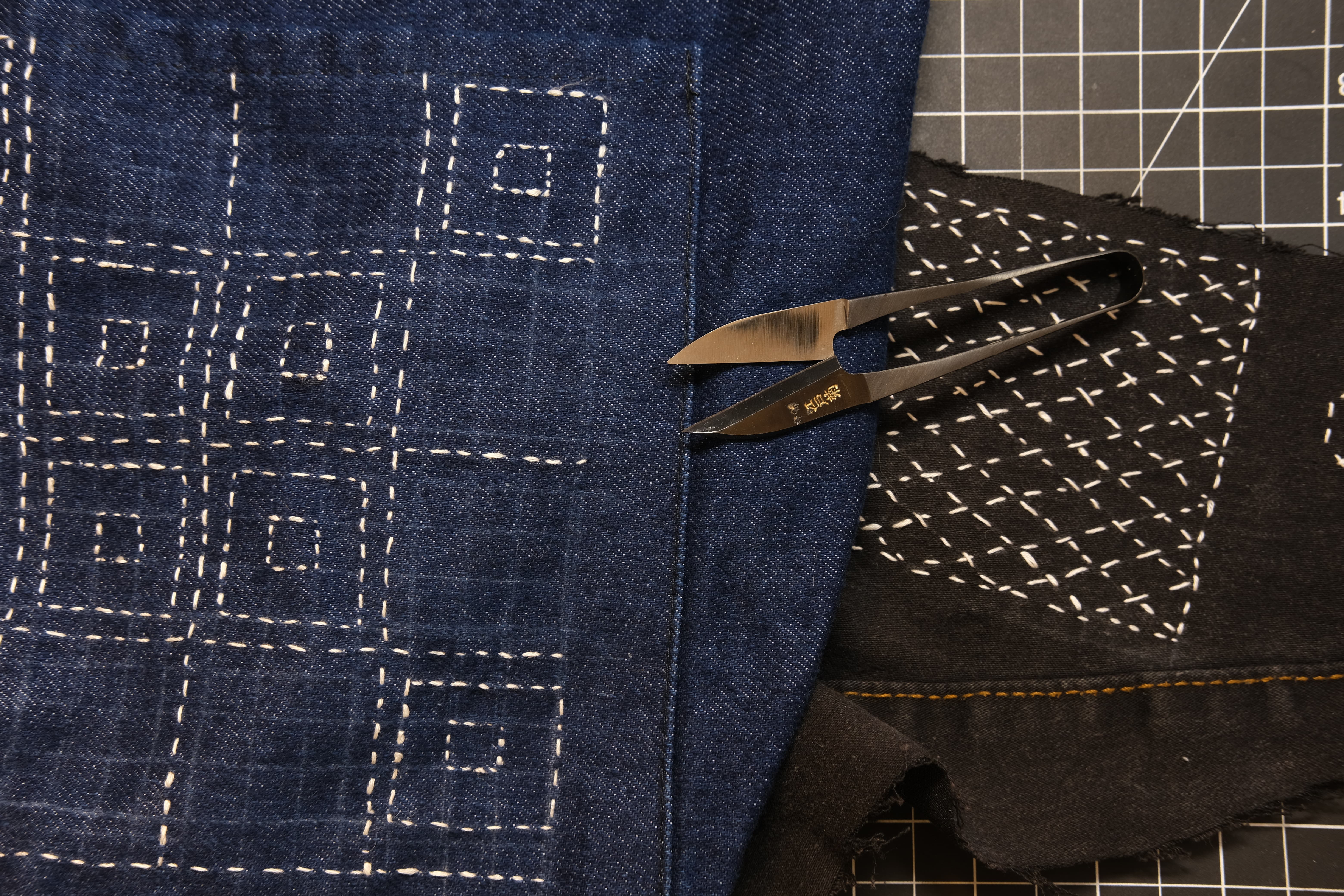
This semester I’ve been working on learning and exploring Sashiko Stitching – a practice not dissimilar to embroidery, rooted in reinforcement and, in conversation with other practices, mending. Sashiko is a practice done historically and today in Japan, and is reminiscent of reinforcement textile work done by many cultures.
At other moments in my life, I’ve lived in textile mill towns around New England, particularly in Vermont and New Hampshire where mending and folk crafts are quite alive. Working with Sashiko stitching has been an opportunity to reflect on my time in these towns and to look at how stitching has helped other people throughout the world.

Sashiko is a practice in consistency both for reasons of form and function. Though the number of stitches per inch can vary, generally I have read and seen consistent stitch length valued across stitched work.
This consistency in each stitch is a bit of muscle memory to practice, and assisted by a hand form where you push multiple stitches though the fabric at once with a fabric or metal thimble. This approach where multiple stitches are done at once is one of the areas where Sashiko differs from many other reinforcement or mending stitches.
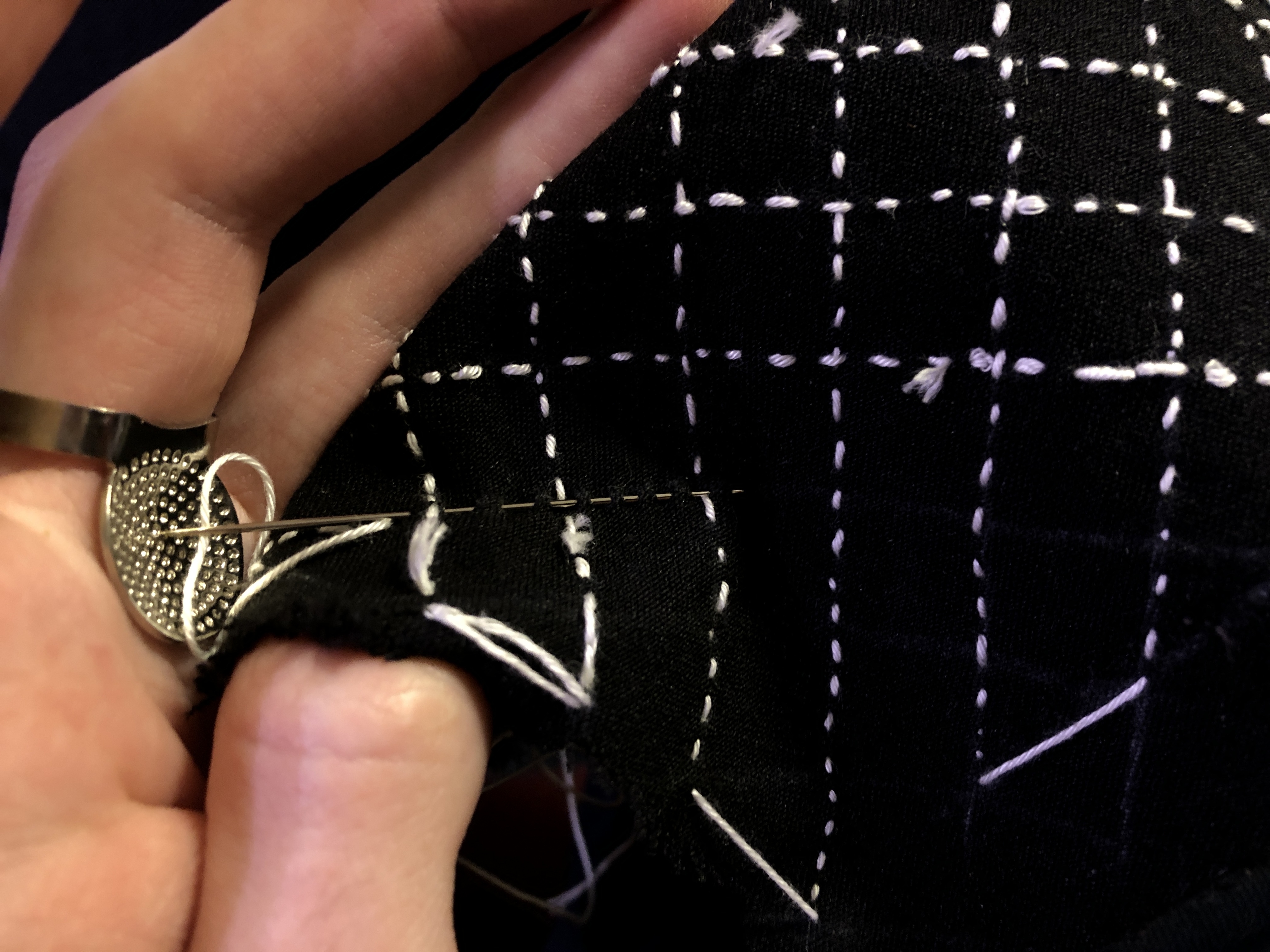
This little square pocket reinforcement is my second attempt at stitching. The faint lines on the denim are white tailor’s chalk that will come off in a wash. Carbon transfer paper, white charcoal, and chalk are popular ways to plan patterns on fabric before making each stitch by hand.

With greater ambitions after these experiments, I’m now tackling a larger section of this denim apron. This pattern has a specific slope associated with the lines, which here I’m trying my best to follow. That said, as I draft out these lines in chalk, the fabric stretches and gives, introducing small imperfections that add to the aggregate beauty of the garment.
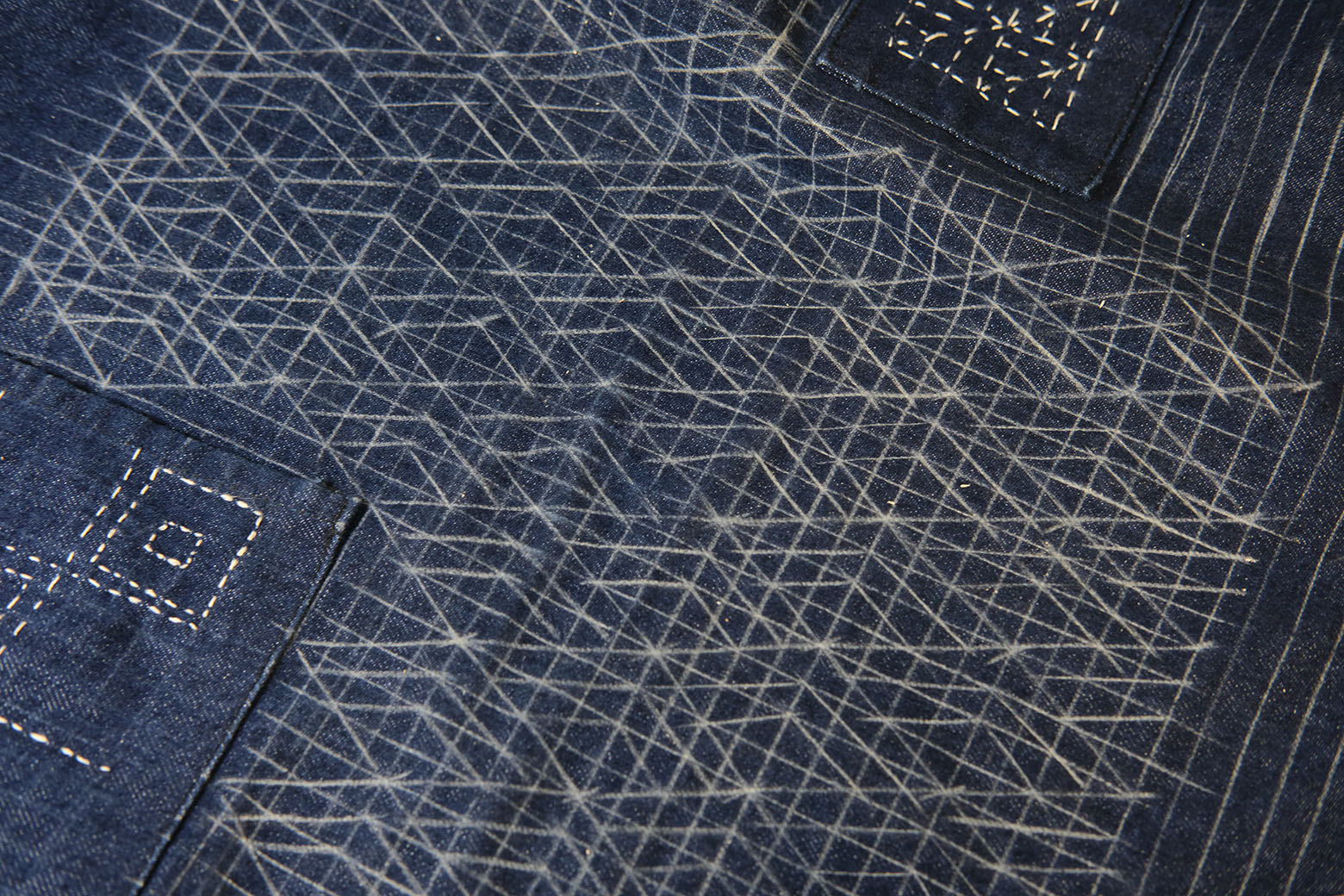
Most recently, I’ve been stitching a patch on the side while planning the larger apron field. One approach I’ve been attempting is prototyping stitches by taking a photograph of an existing patch, with some stitching, and sketching on a tablet potential patterns such as this flower.
I use a few variations of common tools to stitch these patches and projects. Firstly, extra long needles for holding 7 or more stitches before pulling thread through a piece. I tend to use Clover needles.

I thread these needles with Sashiko thread, which is a thick embroidery thread made by Yokota in Japan. This thread consists of about 4 embroidery floss strands twisted together.

When switching threads or getting more, a pair of sharp thread cutters helps keep everything tidy.
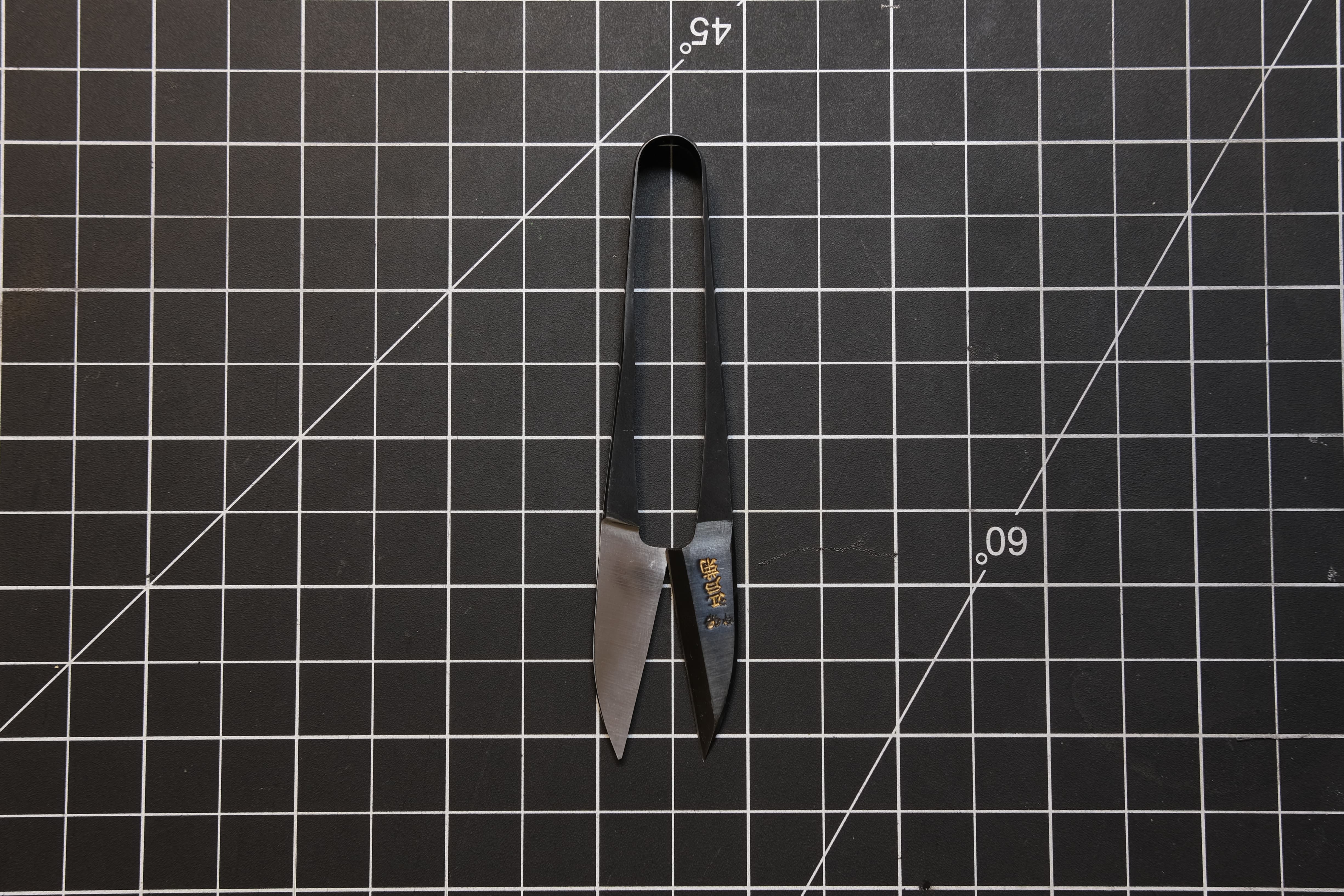
To facilitate holding the needle and pushing it through fabric, I use this Clover needle that goes on the middle finger like a ring, with the surface on my palm.
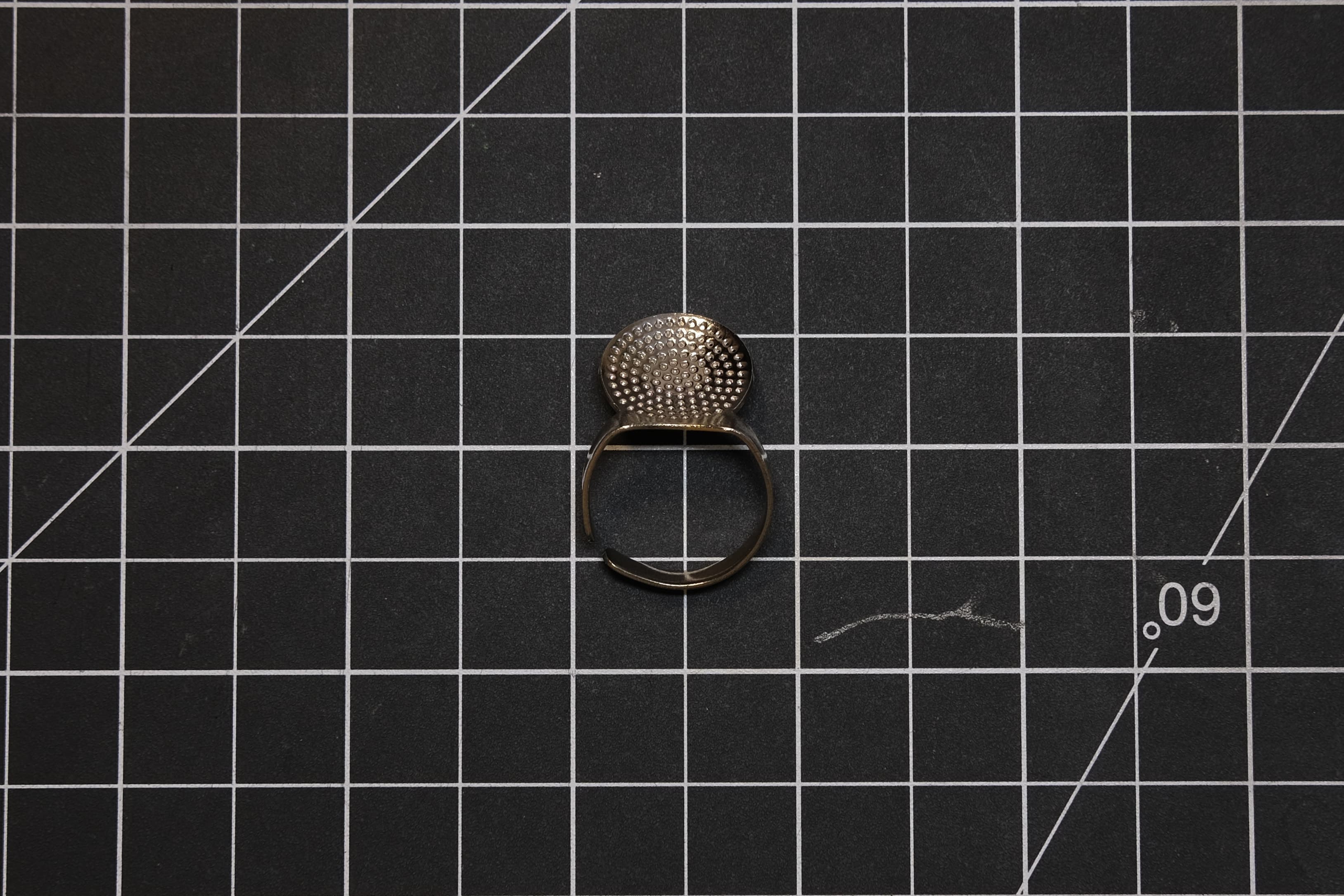
While learning Sashiko practices and traditions, I’ve been referencing two texts, which mainly serve as repositories of patterns stitchers often use.

In the next few weeks, I will be posting more blog posts on my progress and even some videos of stitching which I have been making on and off as I work on these projects
